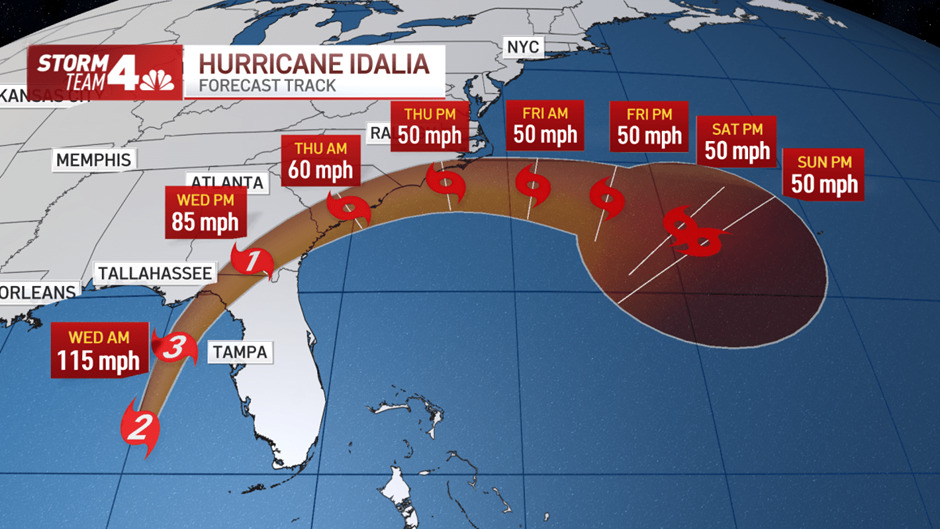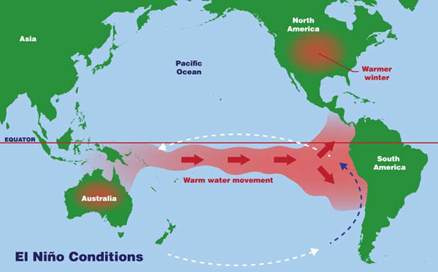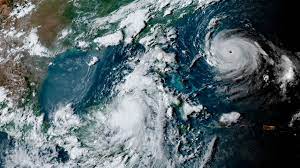Hurricane Idalia which was earlier predicted to be a Category 3 storm, due to intensification by warm waters in the Gulf has now moved up to Category 4, moving at a speed of 130 mph. It is expected to hit the west coast of Florida and cause a catastrophic impact on the region.

Geographical Reasons behind the Hurricane
The geographical factors are multifaceted in nature.

The El Nino season warms the water along the coast of South America which as a result, increases the temperatures in North and South America.
Additionally, the trade winds which carry the warm ocean currents from the Western coast of Africa as North Equatorial current towards the Gulf of Mexico, warm the waters excessively which already have high temperatures due to the continentality effect. As a result, the Florida currents which are born in the region carry this excess water with them in the form of warm ocean currents. This causes flooding and heavy rainfall along the coast of Florida.

However, according to scientists, while Florida is prone to hurricanes due to its geographical location, the catastrophic nature of Hurricane Idalia is a cause of concern as its fuelling is an effect of anthropogenic actions.
Anthropogenic Reasons behind the Hurricane
The National Hurricane Centre warned of the swift escalation of Hurricane Idalia which was earlier predicted to be a category 3 storm. The escalation took place within 24 hours of prediction making it a category 4 storm.
This rapid intensification of storm was a result of anthropogenic factors, suggest experts.
According to Karry Emmanual, a hurricane expert from MIT, storms which intensify by 69 mph within 24 hours were likely to occur once in 100 years in the 20th century. But due to global warming in the 21st century, these events will now occur once in every five to six years.
Additionally, the most recent heat wave which was also a product of disturbance in upper atmospheric circulations has created heat domes in the region which has further caused a rise in temperature, contributing to the storm’s escalation.
According to Karthik Balaguru, a scientist and expert on the Pacific waters, the river plume which flows from the Mississippi River sits on top of the highly saline ocean water which does not let the hurricane mix with the ocean. The warm temperatures, thus remain persistent and storm continues to move without any de-escalation.
Concerns
Thus, the rising temperatures are not only intensifying natural events but also making them more sudden and frequent, making their prediction a challenge.
Climate change has also disabled the balancing mechanisms of nature in the face of such disasters. Thus, human enforced temperature anomalies have left no ground for prevention or de-radicalisation of such natural disasters. The only way ahead in the face of such events is preparedness and awareness among people living in vulnerable areas along withing devising strategies for urgent evacuation.
For the people in Florida, as Hurricane Idalia approaches, a list prepared by CNN may come in handy – https://edition.cnn.com/2022/09/25/us/hurricane-what-to-do-checklist-wxc-trnd/index.html













